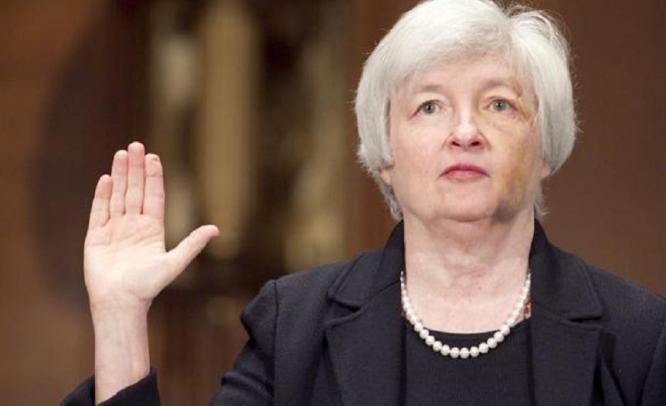Yellen has advocated that the Fed should tolerate a slightly higher rate of inflation without increasing interest rates if the threat of high unemployment persists, Team IFM reports
New York, January 15, 2014: Janet Yellen is all set to assume office on February 1, 2014 as the Chairman of the US Federal Reserve, a feat no woman has achieved in the Fed’s 100-year history. With the Senate confirming her appointment in the first week of January for the most important job in the financial world, Yellen will join the league of the world’s influential women – IMF Chairman Christine Lagarde and German Chancellor Angela Merkel.
The market anticipates that she will continue with the incumbent Fed chief Ben Bernanke’s legacy – quantitative easing and loose monetary policy till there is a marked improvement in the labour market. Serving as the Fed’s vice chairman for the last three years, she has been one of the architects of the accommodative monetary policy pursued by the Fed since the 2008 global financial crisis.
The Federal Open Market Committee (FOMC) in its December 2013 meeting decided to cut the pace of its monthly bond buying starting January 2014 to $75 billion from $85 billion, popularly known as “tapering”, thereby taking its first step towards unwinding their unprecedented monetary stimulus. In order to combat the worst recession since The Great Depression of the 1930s, the Fed started its stimulus program by injecting money into the US economy by buying long term treasuries and mortgage-backed securities.
Although critics remain divided, Ben Bernanke averted the US economy from slipping into deep recession through its stimulus programme or quantitative easing (QE) introduced in three tranches. Throughout Bernanke’s tenure, the Federal Reserve rate has been at near zero rates — a measure used to prop up the economy and spur hiring by keeping long-term interest rates low. The challenge for Yellen is to “moderate” the unwinding of monetary stimulus while treading cautiously between growth and unemployment. The statement of the last FOMC meeting reiterated the position of the central bank to hold the target interest rate near zero “at least as long as” unemployment exceeds 6.5 percent and so long as the outlook for inflation is no higher than 2.5 percent.
The danger is that while low interest rates can fast-track economic growth, cheap money and liquidity can fuel asset bubbles as investors in search of better returns shift borrowed money into stocks, commodities and real estate. In response to a market flush with liquidity, the Standard & Poor’s 500 stock index appreciated by a sharp 30 percent in 2013, its biggest yearly gain since 1997. Another concern for the market is that the Fed’s loose monetary policy has quadrupled the central bank’s balance sheet to USD 4.0 trillion since the break of the crisis in September, 2008.
Yellen has advocated that the Fed should tolerate a slightly higher rate of inflation without increasing interest rates if the threat of high unemployment persists. She has, however, also maintained that interest rates will have to be raised if inflationary pressures go beyond a certain level of comfort. Hailing from Brooklyn, New York, Ms Yellen was an economics professor at the University of California, Berkeley. She has also served under former US President Bill Clinton as chair of the Council of Economic Advisers. In fact, she is the first Fed chair nominated by a Democratic president since Paul Volker vacated the top spot in 1987.
Recent economic data too suggests an uptick in the US economy. The latest retail sales data for December 2013 showed a 0.2 per cent increase in the month suggesting moderate growth in consumer spending. The unemployment report for the same month, however, was rather disappointing as it reported a net addition of only 74,000 in non-farm payroll jobs. Nonetheless, the World Bank in its recent report, “Global Economic Prospects 2014” projects the US economic growth to accelerate to 2.8 percent in 2014 as the winding-up of monetary stimulus “reflects increasingly convincing signs that a self-sustaining recovery is now underway.”


